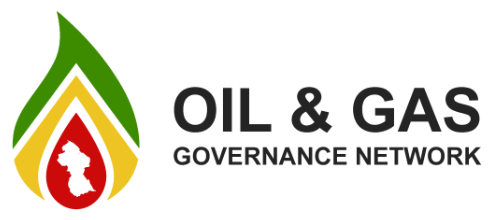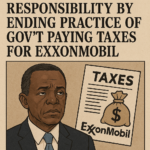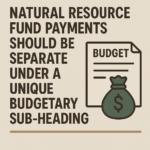Every Man, Woman and Child in Guyana Must Become Oil-Minded – Column 132 Modest investment, gargantuan returns
Last week’s column completed the review of the published financial statements of the three companies which signed the 2016 Agreement for the Stabroek Block. Table 1 is a summary of the Income Statements (Profit and Loss Accounts) of the three companies which operate as branches of external companies rather than as incorporated entities with their own share capital and directors. We were fortunate to have been able to access the balance sheet of the CNOOC intermediate parent showing that the Company has only US$200,000 in permanent capital invested in Guyana. But CNOOC, which has a 25% stake in the Block, is no outlier among the three.
That is a discredited narrative and myth. CNOOC is definitely no outlier. Hess which owns a 30% interest, has permanent capital of US$50,000 or the equivalent of $10 Mn while ExxonMobil, the Operator and 45% holder, has permanent capital of US$500,000 and preferential capital of US$10 Mn. It is clear that those who have sought to justify the incredible, untouchable and sacrosanct tax concessions protected for forty years. Not only do they all operate in low or no tax jurisdictions, but the money that they themselves invest is negligible.
Back to the numbers
These are derived from the audited financial statements of the three companies for 2023. The total profit before the mythical tax for the three companies amounted to G$1,624,712 of which Exxon’s share is shown at 46%, Hess at G$526,236 Mn. or 32% and CNOOC of 21.8%. Readers can turn to Columns 129 to 131 for a review and commentary on the 2023 financial statements of each of the three oil companies, including both their income statement and balance sheet. I have commented in the past years about the lack of comparability of the financial statements and am amazed that the auditors appointed by the Government at considerable cost and amid big fanfare, never seem to have recognised this self-evident fact. But the leadership seems no less clueless.
Table 1.

Financing capital projects
I draw your attention to the line-item Depreciation, depletion and amortisation of $382,826 Mn. charged as an expense in the Income Statement, representing 53% of the total expenditure for the year. That is what is referred to as a non-cash expense and for the technically minded, that amount is a source of funds in the Cash Flow statement. But guess what? Guyana bears fifty percent of that cost, even as the funds are available to be used by the oil companies for further investment. Even after 25 years, Vice President Bharrat Jagdeo who was a key adviser to then President Janet Jagan when she signed the 1999 Agreement, does not seem to understand how that Agreement which has been “bridged” to the 2016 Agreement works. In fact, Mr. Jagdeo compounds that sad state of affairs by refusing to set any ringfencing conditions to any Production Licence. In that regard, he is in good company: Mr. Aubrey Norton, the Leader of the Opposition, is similarly in the dark.
What is clear too is that these companies have recovered their investments many times over while Guyana has to borrow billions to build roads and infrastructure, provide security, grant huge tax concessions, all because we love the foreign investors.
As the Table shows, Guyana will be paying out of our oil fund $306,784 Mn. as taxes for the trio, plus giving the oil companies tax receipts so that they can double-dip. Another grand idea from Mrs. Jagan and Mr. Jagdeo and taken up by David Granger and Raphael Trotman in 2016. We seem to have created our own oil curse!
Table 2: Five Year revenue compilation 2019 – 2023

Five to One is highway robbery
The above Table shows how lopsided the 2016 Agreement in money terms is. Over the years since production began, the oil companies have walked away with the staggering sum of $3,337,760 Mn, inclusive of the tax certificate to which they are entitled. The taxes nominally payable by the oil companies, are paid by the government of Guyana but the receipt is written in the name of the respective oil company so that they can then present them to get tax credits in their own country. What a farce, what a fraud?
But that is only part of the story. The line Royalties represent the compensation to Guyana for the petroleum extracted and sold. Even the quarries, the sand pits, the loggers and the gold miners are envious of a 2% royalty when some of them pay as much as 8%! A 2% royalty is one of the lowest in the world, but the Government claims without any serious understanding of contract law, that there is sanctity. Mr. Nandlall would tell them that such a principle is not absolute and that there are several grounds for setting aside a contract. That will be the subject for another column.
So let me point out that the oil companies have earned five times more than the Government under a 50/50 profit share Agreement. It is clear that the oil companies are engaging in lopsided front-end loading to grab as much as possible, as fast as possible. While draining the natural resources of Guyana, they are squeezing every ounce of flesh and drop of blood from the body of Guyana. The government likes to boast that in 2027 and beyond we will be producing substantially more oil than we do now. That is indeed true but all the evidence from all the experts is that oil prices will begin to fall in another couple of years.
Conclusion
President Ali has disowned responsibility and instead of a professional, competent Petroleum Commission he has delegated responsibility for the sector to Mr. Jagdeo. To say that this is a grievous mistake is an understatement, and grievously are we paying for it.











